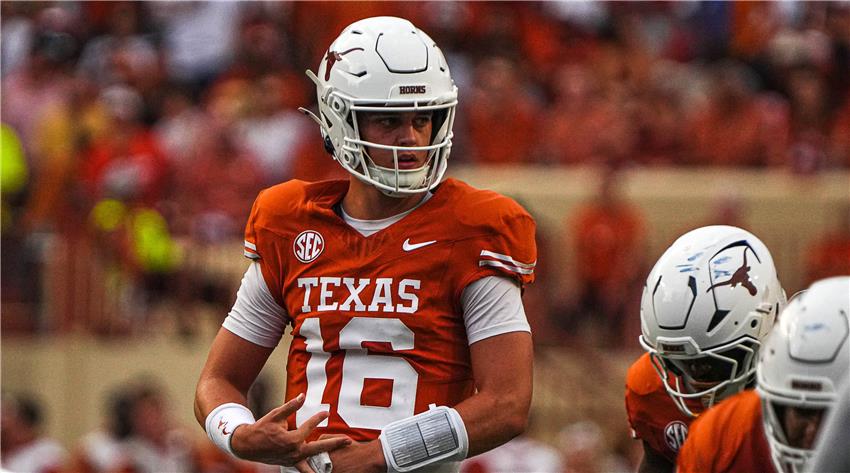
5 Drills That Separate the 2026 Draft Targets
Because it’s more than just a stopwatch.
Every spring, the NFL Combine and pro day circuit turn into a six-week battleground where raw numbers meet game film, and futures hang in the balance. For scouts, every drill is a puzzle piece that helps determine who earns a starting role and who winds up grinding on the practice squad. For players, each rep is a high-stakes audition, careers measured in split seconds. And for fans, especially those tracking the odds on the newest UK sports betting sites, these numbers fuel every debate, fantasy roster decision, and futures bet.
Here’s a breakdown of the five drills that matter most in 2026, plus who to watch, why they move betting markets, and how much more is going on than what’s on the clock.
1. The 3-Cone Drill (a.k.a. the L-Drill)
What it tests: Agility in every plane—acceleration, deceleration, and that all-important ability to flip the hips without losing speed. For edge rushers turning the corner or receivers snapping off a route, this drill mimics game-day chaos in miniature.
Why scouts love it: It’s one of the rare drills that truly applies to every position. Since 2014, over 70% of Pro Bowl edge rushers have run it in under 7.00 seconds.
Technique tip: Stay low through the first cone and hug the turns. Plant too wide, and you’ll add tenths you can’t afford.
Prospects to watch:
- T.J. Parker (EDGE, Clemson): Elite bend on tape and rumored sub-6.8s potential. If he posts a 6.75, he might jump from pick No. 9 to the top 6.
- Arch Manning (QB, Texas): QBs aren’t typically 3-cone stars, but Manning’s off-script flashes will put a spotlight on his agility.
Betting angle: “First EDGE off the board” props can swing fast. A good 3-cone number compresses draft-position markets, and bookies adjust accordingly.
2. The Gauntlet Drill
Purpose: Hands, focus, and poise under pressure. WRs sprint sideline to sideline, catching passes fired at them rapid-fire from alternating angles. No stopping allowed.
What’s new: Today’s data includes peak speed and catch radius. In 2025, Keon Coleman clocked 20.36 mph—despite a slow 40 time—and vaulted into Day 2.
Names to follow:
- Malik Stephens (USC): Rumored to have a sub-0.25s average reaction time—silky smooth hands to match.
- Jack Bech (TCU): A 2025 gauntlet standout back for more, with WR2 ambitions.
Coaching insight: Balls 4 and 5 trip up most players as they shift head and body direction. Some trainers now use strobe glasses to slow visual input, sharpening focus.
3. Short Shuttle (20-Yard)
Why it matters: It's the “twitch test” for linebackers, slot corners, and backs who work in tight spaces. A tenth of a second can be the difference between a tackle-for-loss and a first down.
Physical demand: This one spikes G-forces to around 2.3G on the change of direction. Elite ankle mobility and hamstring strength are non-negotiables.
2026 spotlight:
- D’Andre Shields (S, Missouri): Flying up boards for his scheme versatility; expected around 3.97s.
- RJ Ford (LB, Oklahoma): Raw, but electric. A 4.18 or better puts him in elite company.
Betting note: Look for props like “fastest shuttle under 4.15s” on UK sites—especially as sportsbooks lean into micro-markets.
4. Offensive Line Mirror Drill
Relevance today: With half the league now running outside-zone or RPO-heavy offenses, offensive linemen need ballet feet as much as brute strength.
The test: Slide laterally, react to erratic cues from a coach, and maintain balance. It's about balance, footwork, and reacting without lunging.
Prospects to track:
- Cameron Wade (OT, Stanford): Fluid for his frame; can he mirror with 34" arms?
- Peter Woods (IOL/DT, Clemson): Scouts want to see if he can flip to offense. This drill will say a lot.
Reference point: Tristan Wirfs aced this in 2020 and shut down questions about his arm length. Wade’s hoping to replicate that climb.
5. Defensive Back “W” Drill
What it evaluates: Backpedal, break at 45°, then 90°, and finish by attacking the ball. It’s a test of precision, change of direction, and ball skills.
The data scouts love: Elite DBs decelerate at -8 m/s² or better, then re-accelerate to 80% of top speed in under 0.15s. That combo, plus long arms, makes a DB scheme-proof.
Big names:
- Jaylen Pierce (Florida State): Former nickel who’s expanded his range—his hips and hands will get graded hard.
- Caleb Downs (Ohio State): The top safety on most boards. A clean “W” drill seals his top-10 case.
Beyond the Stopwatch: Where Numbers, Psychology, and Betting Markets Meet
- Teams now pair combine splits with GPS game data to forecast real-world production. A 6.80s 3-cone and high bend score might project to a 0.19 PRP (pass-rush productivity) bump, worth around £7 million in surplus value over five seasons.
- Mental prep matters. Heart rates spike higher during televised combine slots. That’s why agents often lobby for early-morning reps when anxiety is lowest.
- Betting volatility: Sportsbooks don’t wait for final numbers. A verified split on social can move markets in minutes, especially on UK platforms offering real-time props.
How Athletes Train for “The Five”
- Periodised training: Eccentric hamstring work, overspeed treadmills, and proprioceptive foot drills.
- Skill-stacked reps: WRs run game routes right after the gauntlet; OL do wide-zone steps after mirror drills.
- Eyes on the prize: Blue light filters, visual-acuity tracking, and VR sessions mimic stadium glare and fan noise to build tolerance to stress.
The beauty and the cruelty of these drills are in their simplicity. One stutter-step or blown transition, and a prospect’s stock can dip. But hit your marks, and you’re not just rising up mock drafts, you’re shifting sportsbook lines from London to Las Vegas.
With a 2026 class loaded at edge, safety, and tackle, every hundredth of a second will echo, not just in draft war rooms but in betting algorithms and fan debates worldwide. When the stopwatches come out next February, don’t blink. You might miss someone’s NFL future being written—one rep at a time.
